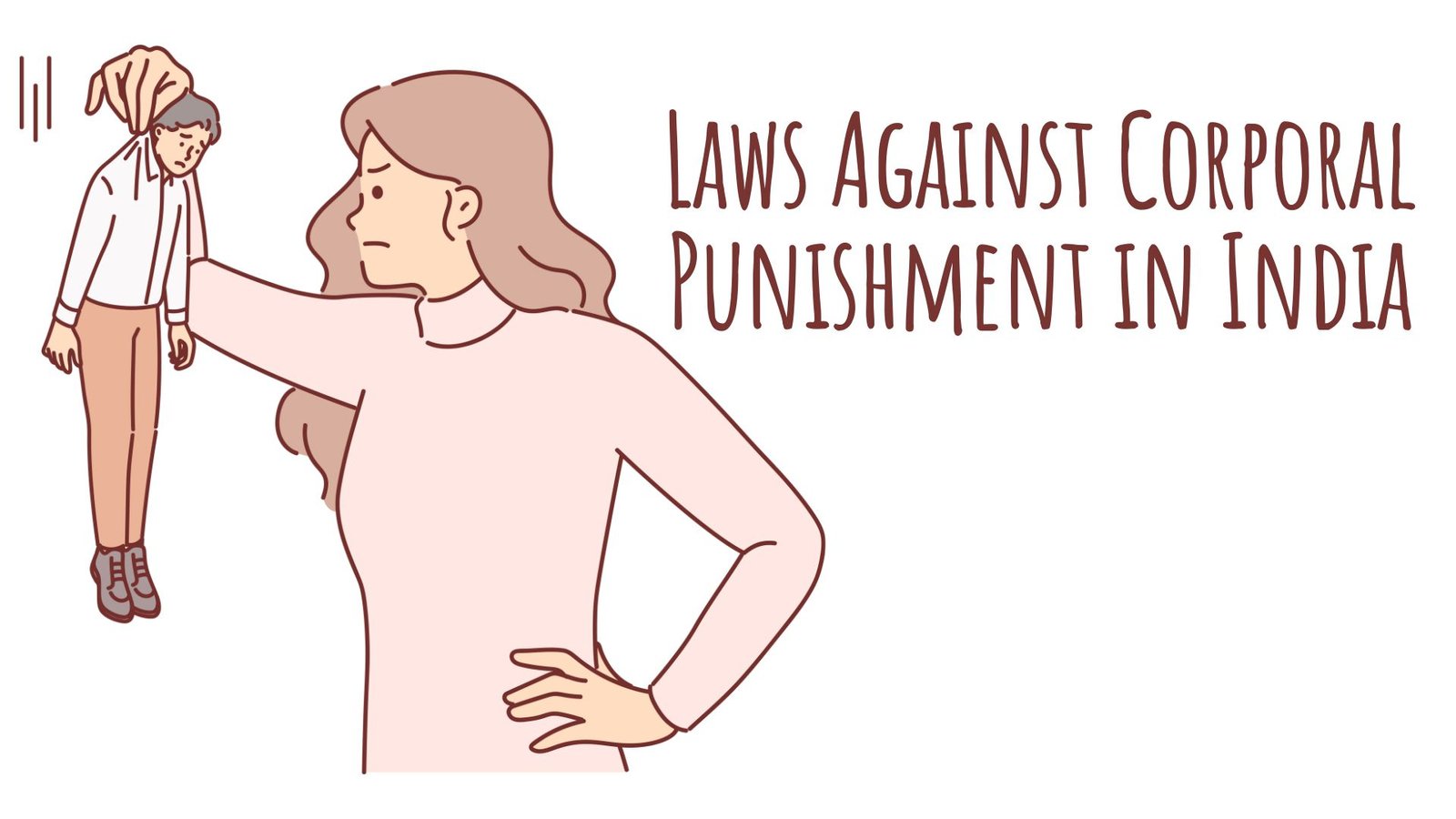On this page you will read detailed information about What Is Corporal Punishment.
As a resident of the United States, you may have wondered about the laws and ethics surrounding corporal punishment of children. With corporal punishment still legal in public schools in 19 states, this remains a complex issue. In this article, we will analyze the legal status, ethical implications, and ongoing debate around the use of corporal punishment against minors in the US educational system and society more broadly. Guiding questions we will cover include: What exactly is corporal punishment? What laws enable its continued use? Who does it impact most? And ultimately, is it ethical or effective? Read on for a balanced examination from multiple lenses to deepen your understanding of this nuanced topic.
What Is Corporal Punishment? Definition and Examples
Corporal punishment refers to intentional acts of physical force against a minor child for purposes of punishment and control. In its most common forms, corporal punishment includes spanking, hitting, and paddling.
While corporal punishment is legal in all 50 states in the U.S., it is banned in schools in 31 states. The debate around corporal punishment involves complex legal and ethical considerations. According to supporters, corporal punishment can be an effective form of discipline and control if used judiciously. However, critics argue that corporal punishment of minors can cross the line into physical abuse and have significant negative psychological impacts.
Some common examples of corporal punishment include:
- Spanking: Striking a child, especially on the buttocks, with an open hand. This is the most common form of corporal punishment.
- Paddling: Striking a child with an object, such as a paddle, stick, or other instrument. Paddling is still permitted in some U.S. schools, though it has declined significantly in recent decades.
- Hitting: Physically striking or slapping a child with a body part such as hands, fists or feet. Hitting a child is considered by many experts to constitute physical abuse.
- Caning: Striking a child with a cane or stick, which can lead to bruising and physical injury. Caning is banned in all U.S. schools.
In summary, corporal punishment involves the use of physical force to discipline and control children. While some see it as an appropriate form of punishment when used judiciously, corporal punishment also raises serious ethical concerns given the potential for psychological harm and escalation into physical abuse. There are alternative non-physical discipline strategies that are widely considered more constructive and respectful.
The History of Corporal Punishment in the U.S.
Corporal punishment of minors has a long and complex history in the United States. For centuries, corporal punishment was considered an acceptable and standard form of discipline for children. However, views on corporal punishment have evolved over time.
In the 17th and 18th centuries, corporal punishment was used in schools and was considered an integral part of child-rearing. Severe beatings and other harsh physical disciplines were common educational and parenting practices. By the mid-19th century, some began to question the effectiveness and ethics of corporal punishment. Despite this, corporal punishment in schools remained legal in all 50 states until the 1970s.
Several legal cases and social changes led to the decline of corporal punishment. In the 1972 case Baker v. Owen, the U.S. Supreme Court ruled that corporal punishment violated the Eighth Amendment’s ban on cruel and unusual punishment. In the 1977 case Ingraham v. Wright, the Court upheld the use of corporal punishment in schools. However, many saw the practice as controversial and degrading. By the 1980s, corporal punishment was banned in schools in many states.
Today, corporal punishment of minors is illegal in public schools in 31 states and Washington, D.C. However, corporal punishment is still legal for use by parents in all 50 states. Some argue it should be banned in homes as well, while others believe it should remain a parenting choice. There are also concerns that corporal punishment disproportionately affects marginalized groups.
The history of corporal punishment in the U.S. illustrates the country’s evolving views on children’s rights, discipline, and violence. While once an accepted practice, corporal punishment of minors is now seen as unethical and harmful by many. However, corporal punishment remains a complex issue with valid arguments on both sides.
Corporal Punishment in U.S. Schools: Legality and Prevalence
Corporal punishment, the act of physically punishing a minor, was once widely accepted in schools across the United States. However, as of 2021, corporal punishment is banned in 31 states and the District of Columbia. The 19 states where corporal punishment remains legal have provisions allowing it, though some require parental consent and limit the types of punishment allowed.
In the previous post, we had shared information about Sentencing for Domestic Violence Convictions in the U.S. Criminal Justice System, so read that post also.
Despite the legal issues, corporal punishment is still practiced in many U.S. schools. According to a Department of Education survey, over 160,000 students received corporal punishment in the 2013-2014 school year. The majority were in Southern states like Mississippi, Alabama, and Arkansas. African American students and students with disabilities were disproportionately subjected to corporal punishment.
The legality of corporal punishment is complex and varies in different jurisdictions. In 1977, the U.S. Supreme Court ruled in Ingraham v. Wright that corporal punishment does not constitute “cruel and unusual punishment” prohibited by the Eighth Amendment. However, in Hall v. T.O.C.F., a later appeals court ruling limited the types of corporal punishment allowed and required parental consent. Some argue corporal punishment violates students’ 14th Amendment rights to due process and equal protection. There have been calls to ban corporal punishment in all U.S. schools due to these concerns as well as research showing its limited effectiveness and potential for abuse.
Proponents argue that corporal punishment can be an effective form of discipline if used appropriately. However, research studies have found little evidence that it improves student behavior or achievement in the long term. The potential for corporal punishment to cross the line into child abuse is also concerning, especially given the lack of training for teachers on its proper administration and the possibility of implicit biases affecting its usage.
Banning corporal punishment in schools is a complex issue with reasonable arguments on both sides. However, the preponderance of evidence suggests its potential harms outweigh any benefits, and alternative forms of discipline may be more constructive and respectful. Most developed nations have banned corporal punishment in schools, signaling that it is viewed as an outdated practice not supported by current research and values.
The Debate Around Corporal Punishment: Discipline vs. Abuse
Corporal punishment of minors, especially in schools, is a controversial issue that involves a debate around when physical discipline crosses the line into child abuse. There are arguments on both sides regarding the ethics and legality of corporal punishment.
On one side of the debate are those who argue that corporal punishment, when administered properly in a controlled manner, is an effective form of discipline that teaches children right from wrong. Proponents believe that spanking or paddling a child, within reason and without causing injury, should be an option for parents and schools to discipline children and maintain order.
However, others argue that corporal punishment qualifies as child abuse and should be illegal. Opponents contend that physically harming children is unethical, can cause long-term psychological and developmental harm, and teaches children that violence is an acceptable means of problem solving. There is research showing a link between corporal punishment and negative outcomes like increased aggression, antisocial behavior, and mental health issues. Critics argue that alternative forms of discipline, such as time-outs, behavior charts, and loss of privileges, are more effective and respectful.
In the U.S., corporal punishment in schools is legal in 19 states, though some have additional regulations. At the federal level, corporal punishment is legal but regulated. However, in recent decades, an increasing number of groups including the American Academy of Pediatrics have called for bans on corporal punishment in schools and for parents. As views on parenting and children’s rights continue to evolve, the debate around corporal punishment is likely to remain contentious but legislation may move further toward restriction or prohibition.
The issue ultimately comes down to whether corporal punishment should be considered an acceptable form of discipline or child abuse. There are good arguments on both sides, but legal and cultural tides seem to be turning against the use of physical violence against minors. The debate itself highlights the complex challenges of parenting and maintaining order in schools.
The Effects of Corporal Punishment on Children
Corporal punishment of children, such as spanking or paddling, can have detrimental effects on their development and mental health. Studies show that corporal punishment is associated with adverse outcomes for children such as:
- Aggression and antisocial behavior: Children who experience corporal punishment are more prone to reacting aggressively and violently towards others. They are also more likely to engage in criminal behavior as adults.
- Mental health issues: Corporal punishment is linked to higher risks of anxiety, depression, and other psychological disorders in children and adults. It activates the same neural mechanisms that are involved in more severe forms of maltreatment and abuse.
- Impaired cognitive ability: Harsh physical discipline can interfere with brain development and is associated with lower cognitive ability, especially in the domains of memory, reasoning, and executive function. Children who are spanked or paddled tend to score lower on IQ tests and have poorer academic performance.
- Strained parent-child relationships: Corporal punishment undermines trust and security in the parent-child relationship. Children may come to fear their parents and hide their misbehavior to avoid punishment, rather than learning proper behavior and self-discipline.
In light of the substantial evidence showing the harm of corporal punishment, many child advocates argue that it should be banned. Several countries have outlawed the use of corporal punishment against children, though it remains legal in the U.S. under certain circumstances. Overall, alternative non-physical forms of discipline are considered healthier and more constructive for children. They help foster positive behaviors through open communication and mutual understanding between parents and children.
Arguments for and Against the Use of Corporal Punishment
For Corporal Punishment
Some proponents argue that corporal punishment is an effective form of discipline that teaches children right from wrong. They believe that physical punishment, in a controlled manner, can be a quick way to correct misbehavior and enforce rules. Corporal punishment is also seen by some as a method that shows children the severity of their misbehavior or wrongdoing. When used appropriately and not abusively, supporters claim corporal punishment can be a useful disciplinary tactic.
- Effective in immediately stopping misbehavior
- Shows children consequences of wrongdoing
- Reinforces rules and proper behavior
Against Corporal Punishment
Critics argue that corporal punishment can be physically and psychologically harmful to children. Physically, it can lead to injuries and trauma. Psychologically, it can lead to increased aggression, antisocial behavior, anxiety, and depression. Corporal punishment also shows children that violence is an acceptable way to solve problems or deal with anger.
- Can cause physical injuries and psychological harm
- Teaches children that violence is acceptable
- Less effective than alternative discipline strategies
- Can damage the parent-child relationship and trust
Many child development experts argue that alternative disciplinary tactics like time-outs, behavior charts, and rewards are more effective and respectful. Corporal punishment is banned in many countries and a growing number of states in the U.S. due to these concerns. Overall, the use of corporal punishment on minors remains a complex issue with valid arguments on both sides.
Alternative discipline strategies should be prioritized, as corporal punishment poses risks to a child’s well-being and development. More constructive ways of teaching children proper behavior without resorting to violence are recommended by experts in child health, development and education.
Alternatives to Corporal Punishment in Schools
There are several alternative disciplinary tactics schools can employ instead of corporal punishment. Studies have shown that alternative measures can achieve better outcomes.
Positive Behavioral Interventions and Supports
Implementing school-wide Positive Behavioral Interventions and Supports (PBIS) has been shown to improve student behavior and learning. PBIS focuses on proactively teaching students positive behaviors and providing reinforcements to encourage those behaviors. This approach aims to address the underlying cause of misbehavior rather than just punishing the behavior itself.
Counseling and Mental Health Support
Providing counseling and mental health resources for students can help address behavioral issues at their source. Students often act out due to underlying issues like trauma, anxiety, depression or learning disabilities. Connecting students with counselors, therapists and support groups give them strategies and coping mechanisms to help them better manage their emotions and reactions.
Non-Punitive Disciplinary Measures
There are alternative disciplinary tactics that don’t involve corporal punishment, such as:
- Behavioral contracts: Students agree to a plan for better behavior and consequences if they don’t follow through.
- Loss of privileges: Temporarily restricting participation in school activities, events or free time.
- Detention: Requiring students to stay after school or during breaks.
- Behavior improvement plans: Working with students, parents, teachers and administrators to set clear rules and reasonable consequences when those rules are broken. The focus is on teaching proper behavior rather than just punishment.
In summary, there are many constructive approaches schools can take to discipline students without resorting to corporal punishment. By providing mental and emotional support, implementing school-wide systems to encourage positive behavior, and using non-punitive consequences, schools can create an environment where students feel empowered to succeed.
Recent Trends and Changes Regarding Corporal Punishment Laws
Over the past several decades, there has been a gradual shift away from corporal punishment of children in the United States. Currently, 19 states have banned the use of corporal punishment in schools. Some of the states that have prohibited corporal punishment did so as early as the late 1970s and 1980s, while others have banned the practice more recently, including New Mexico in 2011 and North Carolina in 2019.
Some of the reasons cited for eliminating corporal punishment include:
- Research showing that corporal punishment can increase aggression and other behavioral issues in children. Harsher physical discipline has been linked to increased aggression, delinquent behavior, and mental health issues.
- Awareness of alternative disciplinary tactics. There are many alternative ways to discipline children that do not involve physical harm, such as time-outs, behavior charts, and loss of privileges. These alternative methods are thought to be as or more effective than corporal punishment.
- Cultural changes in views on children and parenting. There has been a shift to a more child-
Corporal Punishment FAQs: Your Most Pressing Questions Answered
Corporal punishment refers to the use of physical force towards a minor with the intention of causing them pain, but not injury, for the purposes of discipline or behavior modification. In the U.S., corporal punishment typically takes the form of spanking, paddling, or hitting a child with an object like a belt or ruler. Twenty states currently allow corporal punishment in schools. All states permit some degree of corporal punishment by parents.
Yes, corporal punishment of children by their parents or guardians is currently legal in all 50 states. However, some states have banned corporal punishment in schools, childcare facilities, foster homes, and juvenile detention centers. There are also limits on how severe the punishment can be. In general, corporal punishment that causes injury is considered child abuse and is illegal.
Proponents argue that corporal punishment is an effective form of discipline that teaches children right from wrong. Critics argue that it is a form of violence that teaches children that violence is acceptable, and that it can lead to more aggressive behavior, mental health issues, impaired relationships, and cynicism towards authority figures.
There are many alternative discipline strategies, including:
i) Positive reinforcement of good behavior
ii) Behavioral therapy techniques like time-outs, behavior charts, and reward systems
iii) Verbal discipline and reasoning
iv) Limiting privileges
v) Improving parent-child communication and the parent-child bond
These alternative strategies aim to teach children proper behavior through non-physical means. Many child experts argue that alternative discipline is more constructive and helps build trust in the parent-child relationship.
Conclusion
As we have seen, corporal punishment of minors continues to be practiced in many parts of the United States despite ethical concerns and mixed evidence of its effectiveness as a disciplinary tactic. Going forward, it is imperative that you thoroughly research the latest scientific findings and legal statutes in your state if considering utilizing corporal punishment. Additionally, consulting counseling resources and parenting programs focused on positive reinforcement may provide alternatives aligned with your values. This issue warrants ongoing discussion to find solutions balancing parental rights, child welfare, and societal progress.
Disclaimer
The information and services on this website are not intended to and shall not be used as legal advice. You should consult a Legal Professional for any legal or solicited advice. While we have good faith and our own independent research to every information listed on the website and do our best to ensure that the data provided is accurate. However, we do not guarantee the information provided is accurate and make no representation or warranty of any kind, express or implied, regarding the accuracy, adequacy, validity, reliability, availability, or completeness of any information on the Site. UNDER NO CIRCUMSTANCES SHALL WE HAVE ANY LIABILITY TO YOU FOR ANY LOSS OR DAMAGE OF ANY KIND INCURRED AS A RESULT OR RELIANCE ON ANY INFORMATION PROVIDED ON THE SITE. YOUR USE OF THE SITE AND YOUR RELIANCE ON ANY INFORMATION ON THE SITE IS SOLELY AT YOUR OWN RISK. Comments on this website are the sole responsibility of their writers so the accuracy, completeness, veracity, honesty, factuality and politeness of comments are not guaranteed.
So friends, today we talked about What Is Corporal Punishment, hope you liked our post.
If you liked the information about What Is Corporal Punishment, then definitely share this article with your friends.









